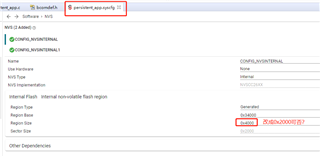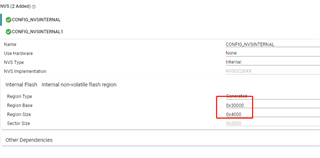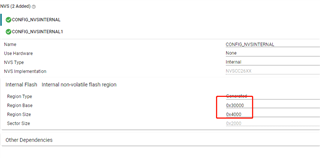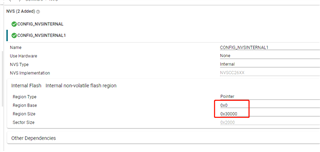Other Parts Discussed in Thread: BLE-STACK, SYSCONFIG
Hi team,
Here's an issue from the customer may need your help:
1) Official routine configuration (non-secure mode), address 0x50 for jump-to-user program. However, as shown in the following file, 816 bytes after 0x1000 appear to be also occupied. So what is the starting address for the first packet to write to flash after receiving the bin file data from the mobile app?
Memory Map — SimpleLink CC13XX/CC26XX SDK BLE5-Stack User's Guide 2.02.04.00 documentation
The following table contains the memory map for the CC13xx or CC26xx.
| Memory Section | Starting Address | Size (bytes) | Description |
|---|---|---|---|
| Flash | 0x00000000 | 60 | Cortex Interrupt Vecs |
| 0x00001000 | 816 | TI RTOS ROM Jump Table | |
| Application / Stack Code | |||
| SNV | 1-2 pages | Simple Non-Volatile Storage | |
| Last Flash Page* | 88 | Customer Configuration | |
| ROM | 0x10000000 | ROM_SIZE | TI-RTOS, BLE-Stack/BLE5-stack, Crypto, Driverlib, Boot |
| RAM | 0x20000000 | RAMVEC_SIZE | Interrupt Vector Table in RAM for dynamic Hwi creation |
| 0x20000100 | RTOSRAM_SIZE | Reserved for pointers for TI-RTOS in ROM | |
| .bss and .data | |||
| ICall heap | |||
| TI-RTOS kernel system stack (CSTACK) | |||
2) Each page for CC2642 is 8k, meaning that the first page cannot be used to hold the user program?
3) write flash, is it required to write the entire page? Or can write it alone, erase it all?
Could you help check this case? Thanks.
Best Regards,
Cherry






